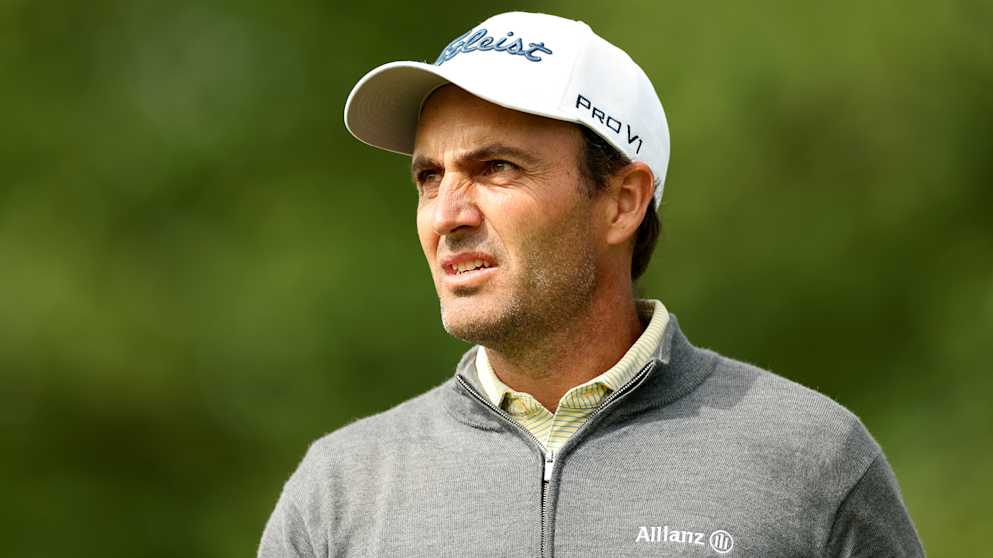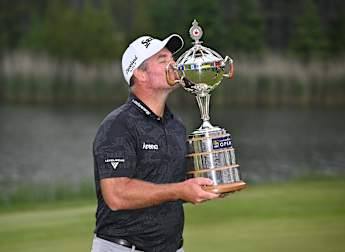When you are faced with arguably the toughest test in golf, you need all the help you can get.

Major Championships are designed to be demanding but for this week’s U.S. Open at Oakmont Country Club, the world’s best are likely to face brutally difficult conditions.
From lightning-fast greens to thick rough and the longest par three in the tournament’s history, much of the pre-tournament discussion has centred around the course
No venue has hosted the national championship of golf in the United States more often, with this year’s 125th edition marking the tenth occasion it has been staged at the revered layout in Pennsylvania.
Many within the game are anticipating the first over-par winning score at a Major since Brooks Koepka won the U.S. Open at Shinnecock Hills in 2018.
As such the 156-strong field this week will no doubt be trying their best to get any advantage they can, with Edoardo Molinari – teeing it up for the second year running after coming through Final Qualifying – fielding queries such is his stature as one of the top data analysts for players.
Here, ahead of the third Major of the season, we caught up with the three-time DP World Tour winner from Italy to preview his sixth U.S. Open appearance - and first at Oakmont - as he seeks to build on his encouraging form over recent weeks after a delayed start to his season through injury.
Oakmont is being described as arguably the toughest course in the United States. Of all the challenges it is likely to pose – from thick rough to quick greens – what do you think will be the key to a player winning, and why?
From what I have seen myself and heard from other players that already played in the last few days, it seems that the rough is absolutely brutal. I think the key will be hitting as many fairways and greens as possible. Usually a course like this heavily favours good ball strikers rather than good putters.
The greens are supposedly going to be running at 15 on the Stimpmeter. By comparison, they run on average at 11 on the DP World Tour so can you describe how you go about adapting to such quick greens?
It will take a lot of time to adapt to the speed of the greens. I think the most difficult adjustment will be reading the greens, even more than the actual pace of the putts. When the greens become so quick the putts break a lot more and it will be difficult to trust that the ball will break that much.
Are there any takeaways you can use from playing at the U.S. Open last year and use to your benefit this year or is it a brand new challenge?
I think this will be a completely different test than last year. At Pinehurst there was a big premium on hitting the ball as far as possible, because there wasn’t much penalty around the fairways and also the greens became exponentially more difficult to hit if you had a longer club in.
What is likely to be your plan for the week in terms of practice rounds and why was it important for you to have a week break before?
When I play a Major in the US I like to take a week off the week before, fly there on the weekend and usually play a few holes before the week starts to get a feel for the course without the crowds and get used to the jet lag. It is a very demanding week and the last thing I need is to fight some jet-lag during the tournament week!
Since returning to the DP World Tour from injury in March, you’ve produced a series of consistent performances, including coming through Final Qualifying. How much confidence does that give you going into the week and do you think your game will suit the challenge of Oakmont?
I am playing quite well right now. I surprised myself in these first few events I played after surgery as I thought it would have been more difficult to post some decent scores. My ball striking has always been a strength of mine in recent years and I like to play tough courses (maybe not as tough as Oakmont though!) so I hope I can have a good week. Making the cut will be a success at my age!
Roughly how many DP World Tour players are you working with around their data and how do you juggle that with still wanting to perform to your best?
I currently work with around 20 DP World Tour players and then a slightly smaller number on the PGA TOUR. The number keeps growing as I recently developed some new tools to help players with course management that the players are really happy with and the rumours spread quickly on Tour. I have a great team of four people helping me right now but I like to be involved in a lot of things myself, as I think that’s a big plus for the players. Sometimes it’s difficult to juggle between helping other players and competing, however being able to discuss golf stuff with some of the top players in the world helped my game too. On top of everything there is my role in helping Luke with Ryder Cup, but I will do whatever I can to be able to help him and the European Team get a win at Bethpage!

The facts and figures behind treacherous Oakmont
• Oakmont has played as a par 70 over the last two U.S. Opens (2007 and 2016). During this time, only four players (out of 312) have scored under par for the week: Dustin Johnson (-4), Shane Lowry (-1), Jim Furyk (-1) and Scott Piercy (-1), all in 2016. Angel Cabrera won the 2007 edition with a cumulative score of plus five.
• Of the 443 official rounds recorded at the 2016 U.S. Open at Oakmont CC, only one was bogey free. Dustin Johnson posted a blemish-free scorecard in the first round (67, 3 birdies, 15 pars).
• Dustin Johnson made only 11 birdies (and no eagles) on his way to winning the 2016 U.S. Open at Oakmont CC. That is the second-fewest made by a champion in any of the 101 Majors that have taken place since 2000.
• The field scoring average at the 2007 U.S. Open at Oakmont CC was 75.705 (or +5.705 in relation to par), which is the highest scoring average relative to par for any U.S. Open over the last 50 years.
• The field scoring average has been at least two strokes over par in every U.S. Open round played at Oakmont CC, dating back to 1927.
Who does the data say is best placed to win?
Scottie Scheffler arrives at Oakmont as the hot favourite having already won three titles so far this year, including his third Major at the US PGA Championship last month.
But, with every member of the world's top 50 except for the injured Billy Horschel in the field, everything is to be played for.
Rory McIlroy, who completed the career Grand Slam at the Masters Tournament in April, leads the DP World Tour contingent, many of whom arrive in good form.
With Molinari's fine eye for the statistics, DP World Tour members Sepp Straka, Shane Lowry and Tommy Fleetwood are the most accurate players off the tee, likely to be an asset of premium importance.
Statistically, Straka, who has won twice on the PGA TOUR, is also the second best player in the world right now with approach play, behind World Number One Scheffler.
Elsewhere, Ludvig Åberg is a great putter on very fast greens and Thorbjørn Olesen is a great putter too, and he has been improving his form in recent weeks with some very consistent results on the PGA TOUR.
Molinari believes either Straka or Fleetwood will be in contention come Sunday night.










